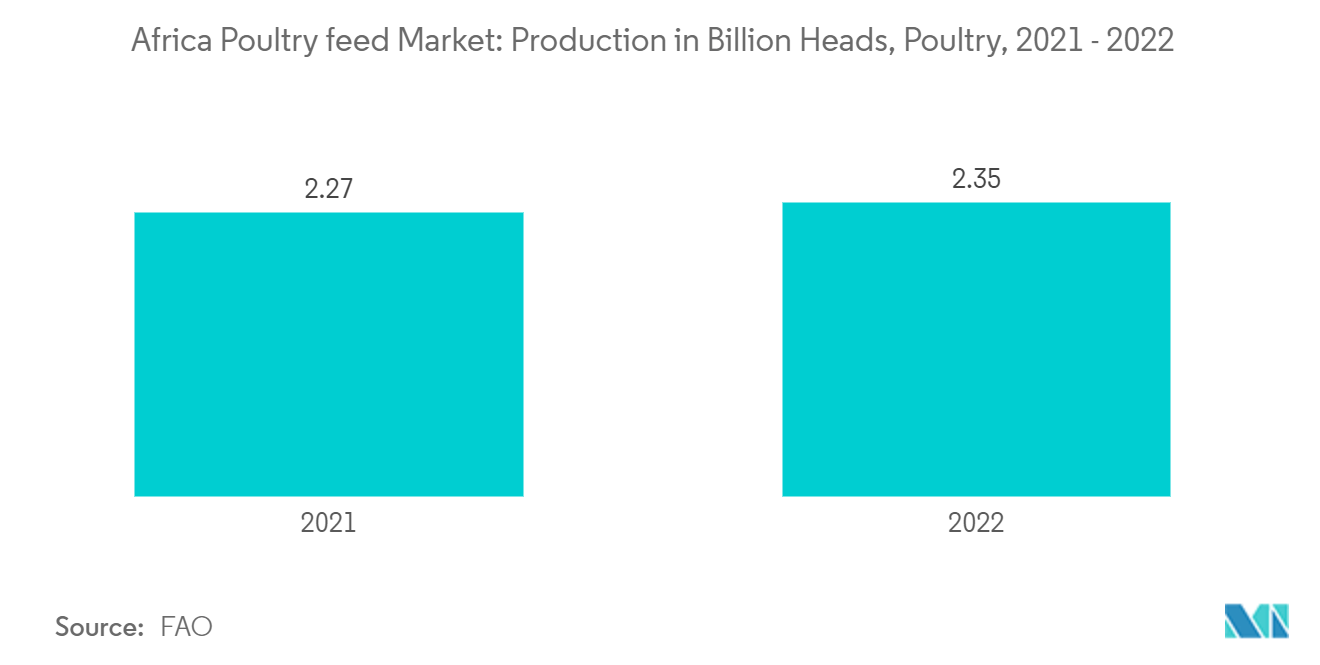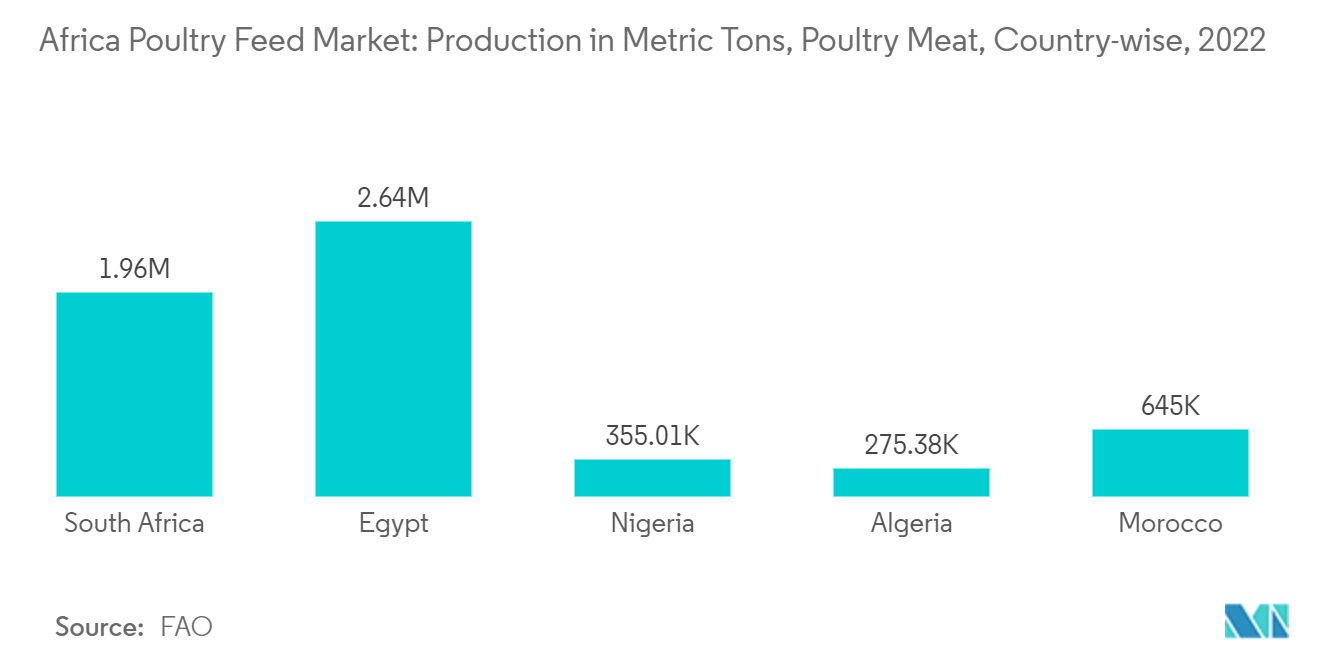Market Trends of Africa Poultry Feed Industry
Increasing Demand for Poultry Products
Poultry farming in Africa is one of the biggest business opportunities on the continent. The African population's love for poultry meat and eggs has grown at a staggering pace, leading to increased poultry production, which has boosted the African poultry feed market. Chicken meat is considered one of the most widely preferred meats among consumers in the region. The demand for white meat is increasing in the region due to its affordability and the growing perception among consumers that it is healthier than red meat. Due to increasing health awareness among consumers, the demand for chicken meat and its products is anticipated to increase over the coming years.
Poultry products are among the most affordable foods and are a healthy protein source without religious restrictions. In addition, they have the lowest environmental footprint in terms of water use per kilogram of meat or eggs produced, land use, and environmental stress. According to the FAO statistics, Africa witnessed 2.35 billion heads of chicken in 2022. The demand for livestock products has not been matched by similar growth in domestic livestock production. Higher unmet demand, thus, led to an increased dependence on meat imports.
Therefore, the fast-growing poultry industry is anticipated further to boost the poultry feed market over the coming years. The high dependence on meat imports holds despite South Africa, a large economy in terms of population size and income, having a relatively well-developed livestock sector.

Egypt and South Africa are Expected to Dominate the Poultry Production in Africa
Egypt has emerged as a dominant force in Africa's poultry production, playing a critical role in the continent's agricultural sector. This dominance is attributed to several factors, including advanced farming practices, government support, and increasing investments in poultry infrastructure. The country's strategic initiatives and technological advancements have positioned it at the forefront of Africa's poultry industry.
Despite the country's large poultry production, according to Egypt's Ministry of Agriculture and Land Reclamation, Egypt imported about 75% of its feed and raw materials for the poultry industry as of 2022. It mainly imports from countries such as the United States, Brazil, and Ukraine. This presents a huge opportunity for poultry feed producers to increase production and decrease dependence on imports.
South Africa is the second largest poultry producer in the region. The poultry industry is the largest segment of the South African agriculture sector, contributing approximately 20% to the GDP and 41% to the animal GDP in 2022. According to the South African Poultry Association, poultry meat is the most consumed animal meat in South Africa, with a per capita consumption of 37.3 kg in 2022, compared to 16.1 kg for beef and 8.7 kg for eggs. Moreover, Fast-food chains, such as KFC, have dealt with major broiler producers to secure local meat supplies. In Senegal, KFC franchises are owned by the Sedima Group, the country's largest broiler producer, underscoring chicken's affordability compared to beef.
The South African poultry feed market is well-established compared to other African countries. The demand for poultry feed is projected to continue rising due to a growing population, increased demand for quality meat products, and higher consumer spending, which boosts animal protein consumption. According to the Department of Agriculture, Forestry, and Fisheries (DAFF), the rising demand for meat in South Africa is a key driver for the increasing demand for feed.
Therefore, the substantial consumption demand and significant poultry production are driving the poultry feed market in Egypt and South Africa. With its well-developed market infrastructure and ongoing economic growth, these two countries are poised to maintain their leadership in the African poultry feed industry.


